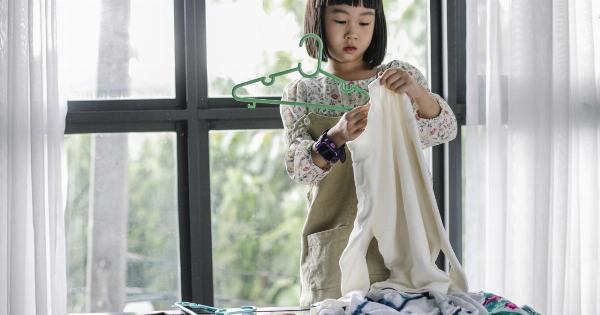Keeping our homes clean and free from germs is essential for promoting the health and well-being of our children. However, it is important to be aware of the potential risks associated with using toxic cleansers in our everyday cleaning routines.
Many commercial cleaning products contain harmful chemicals that can negatively impact the health of our little ones. In this article, we will explore the dangers of toxic cleansers to child health and provide alternative, safer options to ensure a clean and healthy environment for our children.
1. Respiratory Issues
One of the most significant risks of using toxic cleansers around children is the potential for developing respiratory issues. Many cleaning products contain volatile organic compounds (VOCs) such as ammonia and bleach.
These compounds can release harmful fumes that irritate the respiratory system, leading to symptoms such as coughing, wheezing, and difficulty breathing. Prolonged exposure to these fumes can contribute to the development of asthma and other respiratory conditions in children.
2. Allergies and Sensitivities
Children have delicate skin that is more prone to allergies and sensitivities. Toxic cleansers often contain harsh ingredients such as fragrances, dyes, and preservatives that can trigger allergic reactions or skin sensitivities in kids.
Common symptoms include redness, itching, rashes, and even eczema. Using non-toxic and hypoallergenic cleaning products can help prevent these unwanted skin reactions and keep your child comfortable and healthy.
3. Poisoning
Accidental ingestion of toxic cleansers is a major concern when it comes to child safety. Young children are curious and may mistake cleaning products for something edible or drinkable.
Many toxic cleansers, such as drain cleaners and oven cleaners, contain corrosive chemicals that can cause severe burns to the mouth, throat, and stomach if ingested. Additionally, some cleaning agents, like window cleaners, may contain chemicals that are toxic if swallowed. Storing toxic cleansers out of reach and using childproof locks on cabinets can significantly reduce the risk of accidental poisoning.
4. Developmental Issues
The developing bodies of children are more vulnerable to the toxic effects of chemicals found in cleaning products.
Certain chemicals, such as phthalates and bisphenol A (BPA), are known endocrine disruptors, meaning they interfere with the normal functioning of hormones. Endocrine disruptors have been linked to developmental issues, including cognitive and behavioral problems.
Using natural and eco-friendly cleaning alternatives can help prevent these chemicals from entering the child’s system and potentially affecting their growth and development.
5. Environmental Impact
Using toxic cleansers not only poses a risk to child health but also contributes to environmental pollution. When flushed down the drain or discarded in the trash, these chemicals can contaminate water sources and harm wildlife.
Children, as well as adults, are indirectly affected by the negative consequences of environmental pollution. Opting for environmentally friendly cleaning products minimizes the impact on ecosystems and promotes a healthier planet for future generations.
6. Eye Irritation
Many cleaning products contain ingredients that can cause severe eye irritation if they come into contact with the eyes. Young children are particularly vulnerable to accidental splashes or sprays of cleansers while helping with household chores.
Eye irritation may result in redness, inflammation, and discomfort. Using protective eyewear, such as goggles, and opting for non-toxic cleaning solutions can help prevent accidental eye injuries.
7. Neurological Effects
Certain chemicals found in toxic cleansers have been linked to neurological effects, especially in young children whose nervous systems are still developing.
These chemicals include butyl cellosolve, which is found in some all-purpose cleaners, and triclosan, often found in antibacterial cleansers. Prolonged exposure to such chemicals has been associated with issues like impaired cognitive function and behavioral problems. Choosing natural and organic cleaning alternatives can help protect your child’s developing brain.
8. Disruption of the Microbiome
Children are exposed to various bacteria and microbes from the moment they are born, which helps shape their immune system and overall health.
However, the overuse of toxic cleansers, especially antibacterial products, can disrupt the delicate balance of their microbiome. Disruptions in the microbiome can weaken the immune system, making children more susceptible to illnesses and infections.
Using mild, non-toxic cleansers that do not eliminate all bacteria can help maintain a healthy balance and promote a stronger immune system in children.
9. Chemical Burns
As children explore their surroundings, they tend to touch or accidentally spill cleaning products. Some harsh chemicals found in cleansers can cause chemical burns when they come into direct contact with the skin.
Burns can be painful and may require a visit to the doctor for proper treatment. Switching to non-toxic cleaning products reduces the risk of chemical burns and ensures a safer environment for your child to explore.
10. Long-Term Health Effects
Exposure to toxic cleansers during childhood can have long-term health effects that may not manifest immediately.
The accumulation of harmful chemicals in the body over time can increase the risk of developing chronic conditions such as cancer, respiratory diseases, and reproductive disorders later in life. By adopting safer cleaning practices and using non-toxic alternatives, we can safeguard our children’s health and reduce their risk of future health complications.































